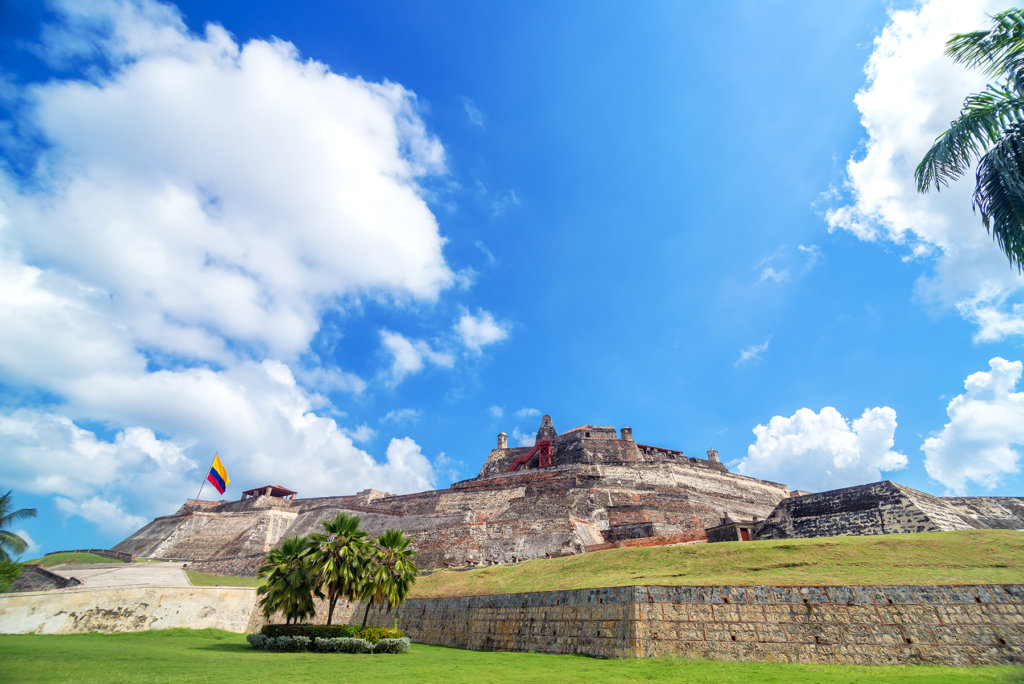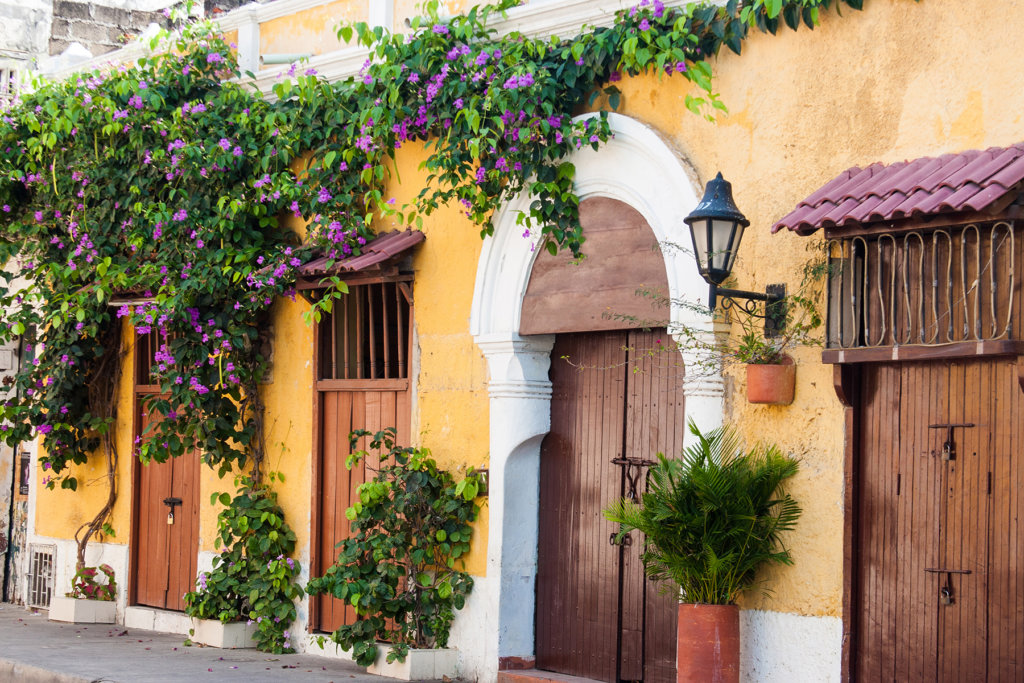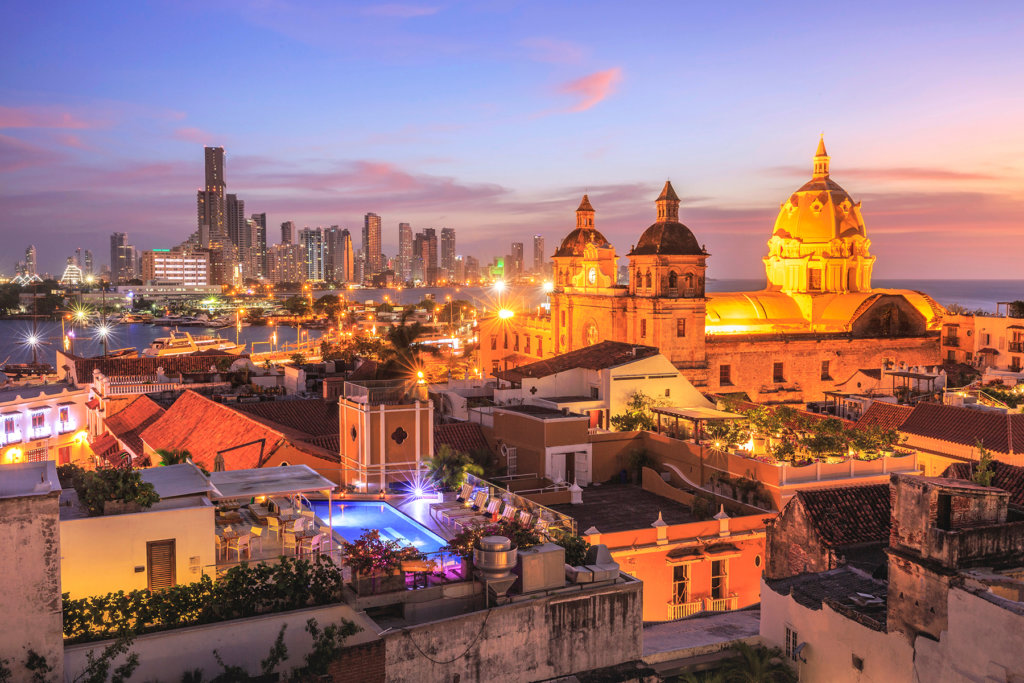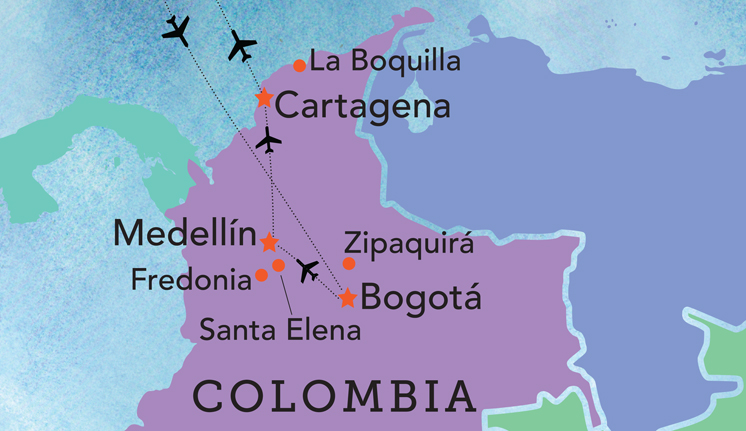After breakfast, set out for an early morning visit to Paloquemao Market, one of the largest and most important markets in the country—and a unique cultural experience in itself. Paloquemao represents the perfect mix of old and new Bogotá as it offers thoughtful insight into the life and customs of its residents. Be amazed at the variety of flowers, exotic fruits, vegetables, meat, seafood, cheese, and medicinal herbs for sale. Everything is fresh and arrives daily to Bogotá from all regions of Colombia. Taste a few exotic fruits and sample various snacks during the visit.
Afterward, explore the famous and well preserved historical colonial quarter of La Candelaria, a lively area dotted with vendors and street performers. Steeped in history and draped in splendid colonial architecture, it's a must-see for photographers to capture the sights and sounds of this fascinating part of Bogotá. During a panoramic walking tour, stroll through the storied streets past the library of Luis Angel Arango to Plaza de Bolivar—the heart of Bogotá. See the Cathedral of Colombia, the National Capitol, the Presidential Palace, the Cardinal’s Palace, the colonial churches of El Sagrario and San Agustin, the Independence House, the Palace of Justice, and city hall, which are all located in this bustling square.
Continuing east up the forested mountains sits Cerro de Monserrate, home to a historic catholic church, which has been a sanctuary of worship since 1657. Embrace the expansive views while learning about the significance of this sacred mountain and the church.
Returning to town, visit the Gold Museum, considered the most important gold museum in the world, presenting the largest collection of pre-Columbian gold—thought to be only less than 1% of the gold used by indigenous Colombians in ceremony as offerings and decorations. Colombia is the most likely origin of the myth of El Dorado, the city made of gold sought after by the Spanish conquistadors in the 16th century. Following a guided tour, leisurely walk the galleries found on three levels, each displaying exquisitely crafted pieces dating back nearly 2,500 years.
Today's final highlight includes a visit to the Botero Museum, situated in a renovated colonial mansion within La Candelaria, donated by Fernando Botero, Colombia’s most famous contemporary artist. Accompanied by Botero's grandson, Felipe, view nearly 120 pieces of Botero's work on display—sculptures, paintings, and drawings—all well-known for their proportionally exaggerated figures. In addition to his work, Botero's personal collection by Picasso, Renoir, Dalí, Degas, Chagall, Matisse, Monet, and Giacometti are also on exhibit.
Overnight: Hotel Sofitel Bogotá Victoria Regia (B,L)







